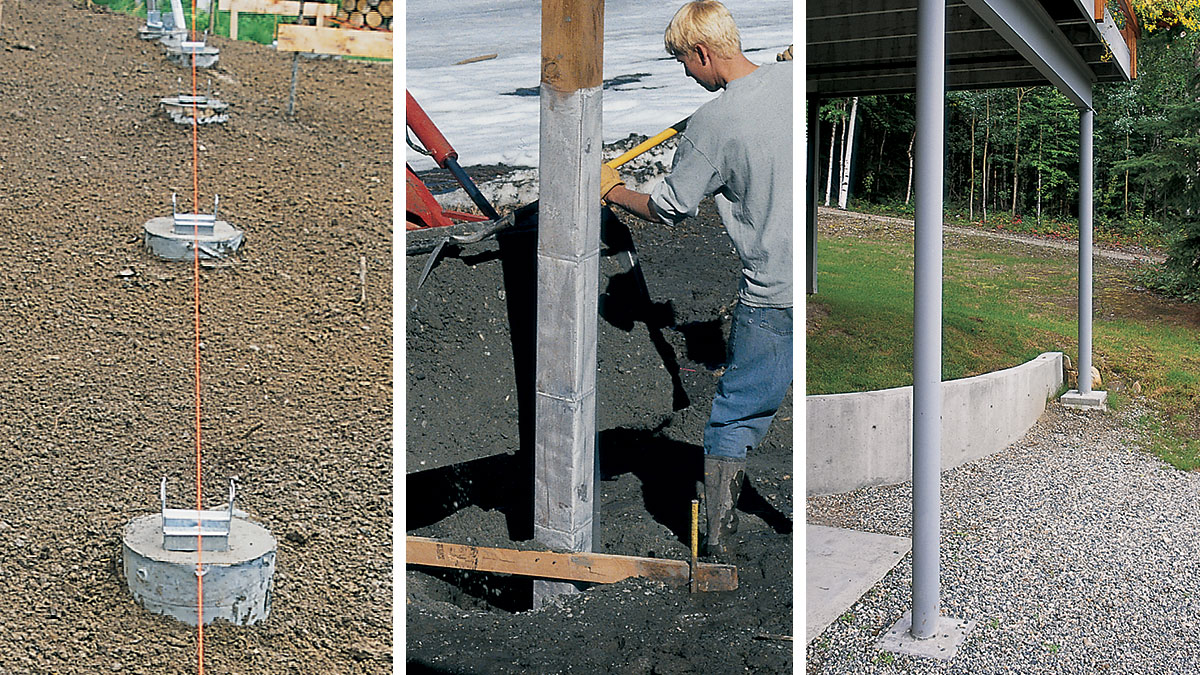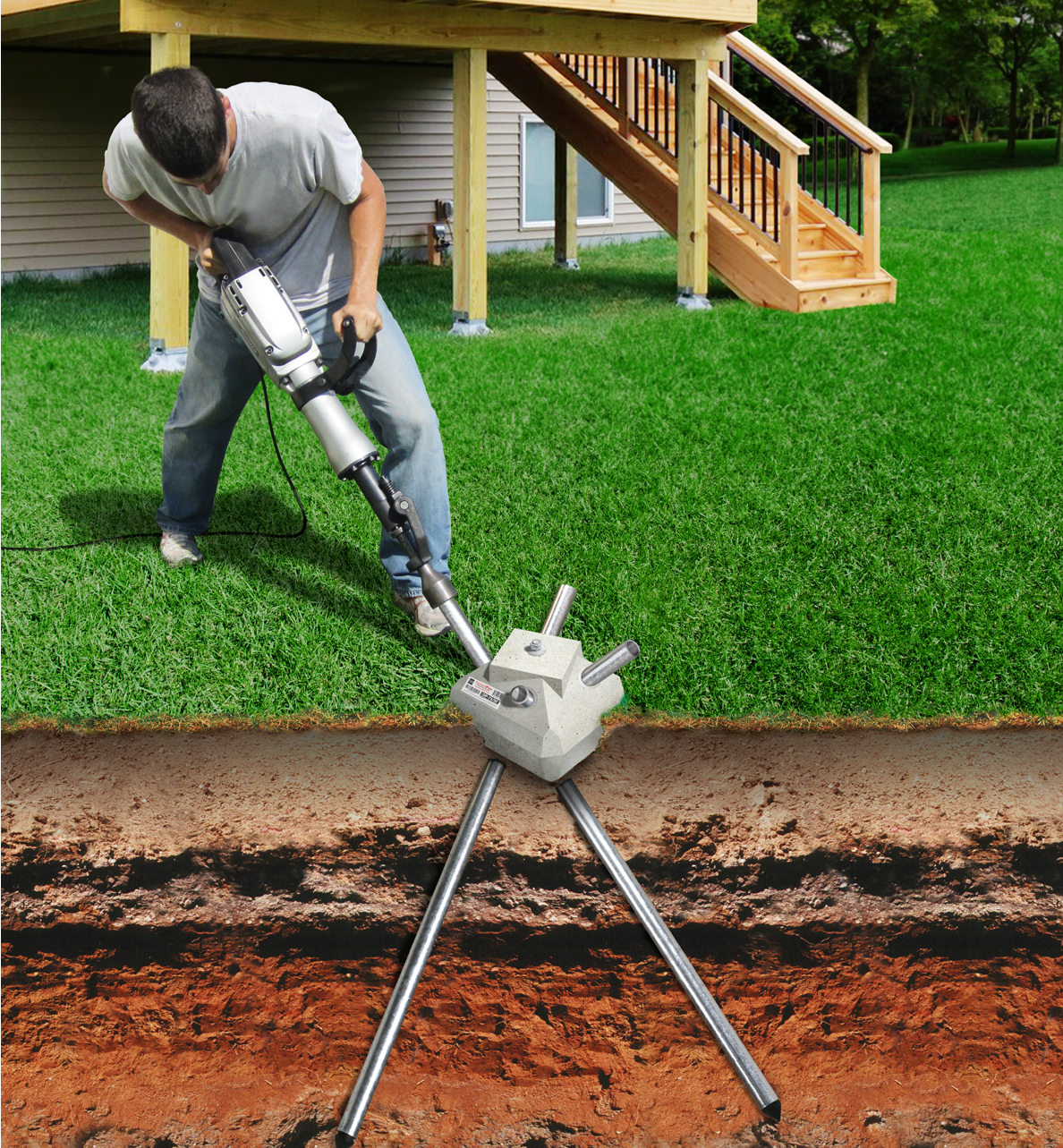Guarantee Stability and Longevity With Properly Set Up Deck Grounds
Deck grounds might not be the most attractive aspect of deck construction, yet they play an important duty in ensuring stability and longevity. In this conversation, we will certainly discover the significance of proper deck grounds, factors to take into consideration throughout installment, various kinds of grounds readily available, step-by-step setup overview, and upkeep pointers for ensuring durable grounds.

Value of Appropriate Deck Footings
Why are properly set up deck grounds vital for the stability and longevity of your deck? The response depends on the essential role that deck grounds play in supporting the weight of the whole structure. Deck footings are the foundation on which the deck relaxes, moving the tons from the deck to the ground. When footings are not properly installed, it can bring about a range of issues that endanger the stability and durability of the deck.
Firstly, correctly installed deck grounds distribute the weight of the deck evenly, avoiding any kind of unequal settling or sinking. This is particularly important in areas with unsteady dirt, as it aids to alleviate the danger of the deck shifting or falling down. Additionally, well-installed grounds ensure that the deck stays level, preventing any kind of architectural damages that can occur when a deck becomes unequal.
Secondly, effectively installed footings offer a strong support for the deck, avoiding too much activity and sway. This assists to preserve the architectural integrity of the deck, decreasing the danger of injuries or crashes. It likewise reduces the wear and tear on the deck, enabling it to hold up against the aspects and normal use for a longer duration of time.
Factors to Take Into Consideration for Deck Ground Installment
When installing deck footings, there are several important variables to take into consideration for appropriate installment. Various soil types have various load-bearing abilities, so it is essential to carry out a dirt test to ensure the footings can sustain the weight of the deck and its occupants. By taking right into account these aspects, you can make certain the proper installation of deck grounds and take pleasure in a long-lasting and stable deck.
Kinds of Deck Footings to Pick From
There are numerous different kinds of deck grounds readily available for you to pick from. Each kind has its own advantages and drawbacks, so it's essential to consider your details demands and the problems of your deck before choosing.
One typical kind of deck ground is the concrete ground. This includes digging openings in the ground and pouring concrete right into them to develop a strong structure. Concrete grounds are durable and offer exceptional security, making them appropriate for decks in locations with challenging dirt problems or high wind tons.
One more option is the helical pier ground, which contains a steel shaft with helical plates that are screwed into the ground. These grounds fast to install and can be utilized in various dirt kinds, consisting of Discover More sandy or clay dirts. They are also adjustable, permitting for simple leveling of the deck.
Sonotube footings are an additional popular selection. These footings are developed by positioning a cardboard tube in an opening and filling it with concrete. Sonotube grounds are reasonably simple to set up and provide sufficient security for smaller decks or in areas with much less requiring dirt problems.

When selecting the sort of deck footing, it's essential to take into consideration variables such as dirt conditions, deck size and weight, local building ordinance, and individual preferences. By selecting the proper footing type, you can make sure the stability and longevity of your deck.
Step-by-Step Overview for Installing Deck Footings

Identify the place: Begin by marking the specific setting of each ground using stakes and string (Deck Footings). Think about any type of neighborhood building regulations or laws relating to problem ranges
Dig the holes: Make use of a post opening digger or an auger to dig the holes for the footings. Usually, a depth of at the very least 36 inches is suggested for security.
Degree the holes: Ensure that the bottoms of the openings are level (Deck Footings). This can be attained by utilizing a level or a straight board across the top of the holes
Add gravel: Area a layer of gravel at the end of each hole to improve drain and avoid the footing from sinking into the dirt over time.
Place the ground kinds: Insert the ground forms into the holes, ensuring they are centered and level. Use risks to safeguard them in position.
Mix and pour concrete: Adhere to the directions on the concrete mix bag to prepare the concrete. Pour the concrete right into the ground kinds, filling them completely.
Smooth the surface: Use a trowel to smooth the surface of the page concrete and remove any air pockets. Allow the concrete to heal according to the supplier's directions.
Upkeep Tips for Long-lasting Deck Grounds
Appropriate maintenance is critical for ensuring the durability and stability of deck grounds. By regularly evaluating and maintaining your deck footings, you can protect against damages and prospective safety threats.
Normal cleaning is additionally vital for maintaining deck footings. Debris, vegetation, and dust can gather around the footings, which can result in moisture accumulation and degeneration. Cleansing the grounds frequently, utilizing a stress or a brush washer, can help protect against these concerns and expand the life expectancy of your deck.
Along with cleaning, it is necessary to keep the area around the footings clear of any kind of obstructions. Prevent piling things against the footings or permitting plants to grow too near them. These blockages can trap wetness and cause the footings to deteriorate over time.
Finally, routine resealing of the footings is recommended to safeguard them from dampness and other environmental variables. Applying a waterproof sealant can help protect against water damage and expand the life-span of the grounds.
Final Thought
To conclude, proper setup of deck grounds is essential for making sure stability and durability of your deck. Factors such as dirt type, tons capability, and regional building regulations need to be considered when selecting the right kind of deck footings. Following a detailed guide for installation and normal upkeep will help to ensure the grounds remain sturdy and lasting.
In this discussion, we will check out the value of proper deck grounds, factors to take into consideration throughout installation, various types of footings available, step-by-step installment overview, and maintenance pointers for guaranteeing resilient footings. Deck footings are the foundation on which the deck rests, moving the load from the deck to the ground.One common kind of deck footing is the concrete ground. Place the footing types: Place the ground forms into the holes, ensuring they are focused and degree.In final thought, appropriate installation of deck grounds is important for making sure security and longevity of your deck.
Comments on “Architectural Integrity Matters: Picking the Right Deck Footings for Your Outdoor Task”